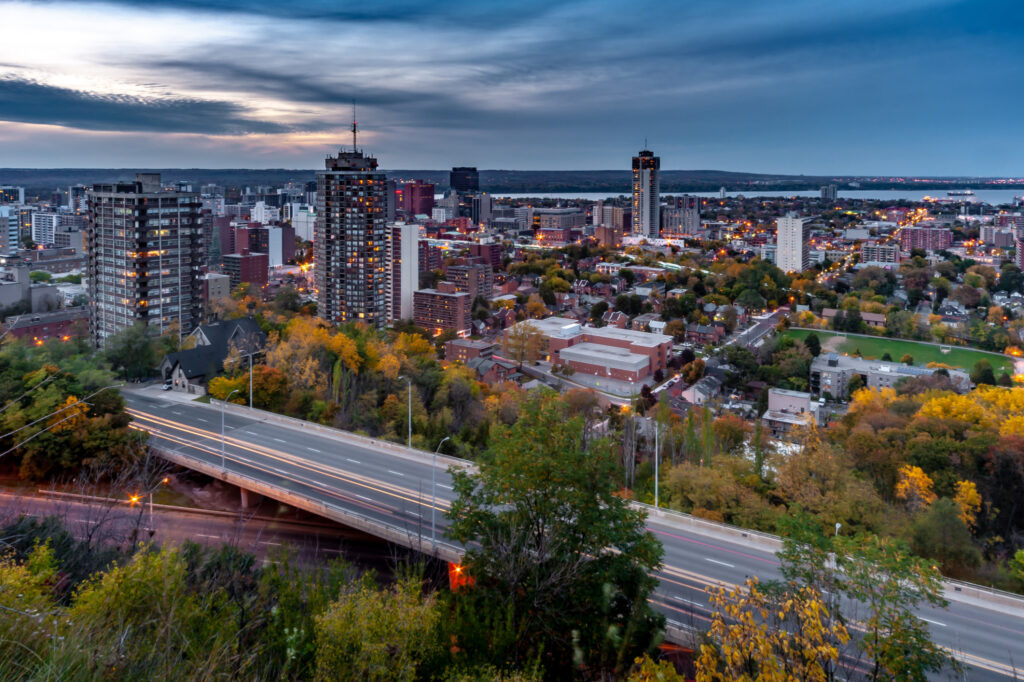Hamilton truck plans delayed and rerouted
Proposed changes to a truck route in Hamilton, Ont., are facing opposition from residents and trucking businesses alike as the issue winds its way through the city’s planning process.
A related master plan – placing significant limits on trucks with more than five axles, as well as travel through the downtown core – is heading back to staff for further review before returning to a subcommittee in March.

The rules would apply to any truck or trailer with a gross vehicle weight of more than 4,500 kg, and the vehicles would only be allowed to take the “shortest path” off the designated truck route when making local deliveries.
“The Hamilton truck route will add 17 km per trip on average, adding about 15-20 minutes per day,” Ontario Trucking Association president Stephen Laskowski said, referring to feedback from members traveling west of Hamilton. “Add time, add kilometers, you add costs…. Make the trip longer, we burn more fuel. We burn more fuel, you create GHGs.”
“These are not routes that the trucking industry likes to go down because we like to go there. It’s because our customers require us to go there,” he said.
Laskowski was among dozens of delegations during a meeting of the Truck Route Sub-Committee on Nov. 29, with residents and community groups largely opposing trucks in residential areas – citing concerns about quality of life, emissions, and safety.
Hamilton recorded 13 truck-related traffic fatalities between 2014 and 2018, with six involving pedestrians.
“Council recently took the bold stand to keeping in check urban sprawl. How does jamming industrial truck route traffic through the rural community speak to respecting sprawl?” asked Tanya De Jager, one of several residents questioning plans for Nebo Road.
“We drive by the Amazon building and actually couldn’t count the number of truck bays. Is this what the committee is trying to accommodate with turning two-lane rural roadways into dedicated truck routes?”
“You are giving licence to operators to use our neighborhoods as short cuts. To destroy our infrastructure. To pollute our lungs, wake us from sleep and endanger our people,” said resident David Colacci.
Robert Iszkula, representing the Truck Route Reboot Community Group, said he didn’t see any need for the issue to become a “battle” between industry and residents. “What we are asking for is that transport trucks requiring access from the highway to the industrial area and the ports be directed to Nikola Tesla Boulevard and Burlington Street only,” he said. “Those roads were built for this. Allowing heavy trucks to user our downtown roads puts too much strain on them.”
‘There’s just no other route’
Hugh Loomans, president and CEO of Sylvite, admits that the trucks traveling through the downtown core even drive him crazy.
“There’s just no other route. That’s the frustration,” he said. “By the time you get into a heavy truck, drive all the way out across the Lincoln Alexander Parkway, down the Red Hill Valley, back over to Burlington and to the west harbor, I think it’s significantly more than 15 minutes.”
Bunge North America noted in a written submission that adding 15-45 minutes per return route between Pier 11 and the 403 could add $20 to transportation costs in each direction.
Challenges have also emerged with plans to further limit the moves of vehicles with more than five axles.
“The introduction of axle restrictions on key connectors to the regional network is a major concern as it unfairly penalizes agricultural users,” said Larissa Fenn, director of public affairs at the Hamilton Oshawa Port Authority.
Rather than taking 12 minutes to travel today’s 7.8-km routes, proposed restrictions could see trucks traveling 26 or 37 km between Pier 10 and the foot of Highway 6, she said.
“The limitation to five axles effectively eliminates our ability to operate within this area of the city or to use western/southern routes to access highways in that direction without first taking a more circuitous route to the east,” said Mark Hebert, national transportation manager at P&H Milling Group.
All but one of its vehicles have more than five axles. And Hebert noted that the axle restrictions will also increase congestion and delays around the port.
The issue is not unique to the agricultural-focused fleets that serve the terminal.
“Many companies such as ours, who mainly haul household commodities, often run tandem and tridem trailers,” said Steve Foxcroft, vice-president of Fluke Transport. “The impact of this additional axle is not adverse in any way to what is trying to be achieved on the truck route master plan.”
Have your say
This is a moderated forum. Comments will no longer be published unless they are accompanied by a first and last name and a verifiable email address. (Today's Trucking will not publish or share the email address.) Profane language and content deemed to be libelous, racist, or threatening in nature will not be published under any circumstances.